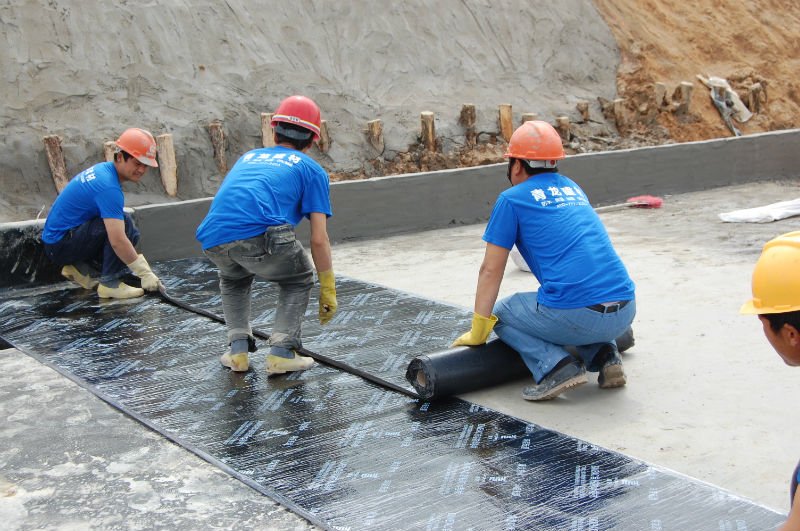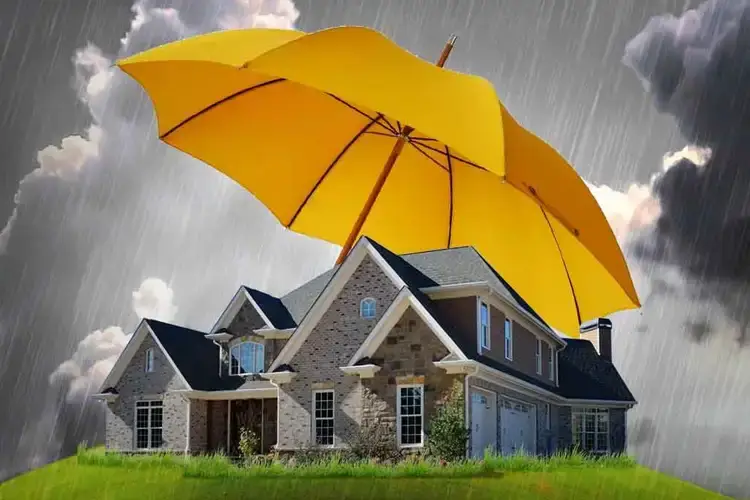French drain installation Omaha: What to Expect
Wiki Article
Why Waterproofing Is Vital for Lasting Frameworks: an Extensive Analysis
Waterproofing plays an essential function in the durability of frameworks. It functions as a barrier versus wetness, which can cause substantial problems like mold and mildew and damage. Recognizing the numerous waterproofing approaches and their implications is crucial for building proprietors. The repercussions of disregarding this element can be extreme. Discovering these components reveals not simply the need of waterproofing, however also its wider effect on residential property worth and security.Comprehending Waterproofing: Definition and Value
Waterproofing offers as an important barrier versus wetness intrusion, safeguarding frameworks from potential damage. It incorporates different approaches and materials created to avoid water penetration into structures, making sure durability and capability. The importance of waterproofing can not be overemphasized, as it protects versus a series of problems, including mold and mildew growth, wear and tear of products, and structural weakening.Effective waterproofing services can consist of membranes, finishings, and sealers, each tailored to specific atmospheres and architectural styles. By producing a protective layer, these options aid maintain a dry interior, which is crucial for the wellness of occupants and the conservation of residential property value.Moreover, purchasing waterproofing at the building phase is substantially a lot more cost-effective than dealing with water-related issues after they occur. Understanding the concepts of waterproofing is critical for architects, home builders, and home owners intending for resilient, resistant structures that stand up to the examination of time and ecological obstacles.
The Influence of Water Damages on Architectural Honesty
Water damage postures significant dangers to architectural honesty, largely with the growth of mold and mildew and mold. These organisms not only jeopardize interior air quality but likewise lead to product deterioration gradually. In addition, extended exposure to wetness can compromise structural elements, boosting the likelihood of collapse or failing.Mold and Mildew Growth
Wetness breach presents a considerable threat to the structural honesty of buildings, leading to the expansion of mold and mildew and mold. These fungi grow in wet atmospheres, often taking root in hidden areas such as wall surface dental caries, under flooring, and in ceilings. Their development not only develops undesirable spots and undesirable smells but likewise adds to a decrease in indoor air high quality, posing health and wellness dangers to occupants. Mold and mold can compromise materials like wood and drywall, bring about additional dampness retention and creating a cycle of damages. Early detection and removal are vital to avoid extensive growth, highlighting the necessity of effective waterproofing actions. Resolving dampness issues without delay can secure both the wellness of occupants and the long life of the structure.Architectural Weakening Dangers
Uncontrolled wetness intrusion can bring about serious architectural weakening, jeopardizing the honesty of buildings. Water damages typically affects fundamental elements, such as beam of lights, columns, and walls, causing jeopardized load-bearing capacity. Extended exposure to moisture can trigger materials like wood to rot and steel to rust, compromising their structural properties. This wear and tear might lead to cracks, bowing, and even devastating failures if left unaddressed. Foundation waterproofing Omaha. Additionally, water infiltration can threaten the soil beneath structures, triggering settling or changing that further exacerbates structural risks. As an outcome, executing efficient waterproofing services is vital in preserving a building's architectural integrity, stopping expensive repair services, and guaranteeing security for passengers. Proper upkeep and proactive steps are crucial in mitigating these considerable threats related to water damagesTypes of Waterproofing Methods and Products
Waterproofing approaches and materials play a vital role in protecting structures from water damage. Key methods consist of membrane waterproofing, which offers a physical barrier; liquid waterproofing remedies that form a smooth coat; and cementitious waterproofing choices known for their toughness and ease of application. Understanding these different techniques is necessary for selecting one of the most suitable method for certain building needs.Membrane Layer Waterproofing Methods
Membrane waterproofing methods are important for shielding structures from the destructive effects of water seepage. These methods entail the application of waterproof membrane layers that develop an obstacle against moisture. The 2 key sorts of membrane layer systems are sheet membrane layers and liquid-applied membranes. Sheet membrane layers, normally made from products such as rubberized asphalt or polycarbonate, are erected and can be turned out and stuck to surface areas. On the other hand, liquid-applied membranes are used as a fluid and cure to create a smooth layer. Both types supply flexibility and resilience, dealing with numerous applications, consisting of roof coverings, basements, and structures. Proper installation and upkeep of these membranes ensure lasting protection, enhancing the life expectancy and honesty of the frameworks they safeguard.Fluid Waterproofing Solutions
Liquid waterproofing solutions stand for a flexible choice to standard membrane systems. These solutions generally involve the application of fluid finishings that heal to form a smooth, sturdy obstacle versus water seepage. Different kinds of fluid waterproofing products are readily available, consisting of polyurethane, bitumen, and acrylic-based formulations. Each kind provides unique residential properties, such as versatility, bond, and UV resistance, making them appropriate for diverse applications. The application process commonly includes splashing or rolling the liquid onto surface areas, enabling coverage of intricate shapes and information, which reduces possible weak points. Fluid waterproofing solutions are specifically beneficial for locations with movement, such as joints and splits, as they can accommodate architectural shifts without jeopardizing honesty, making certain lasting defense for structures.
Cementitious Waterproofing Options
Various cementitious waterproofing alternatives are available, using effective options for numerous construction requirements. These systems typically include a mix of concrete, sand, and ingredients, making them suitable for both exterior and interior applications. Among the preferred options are crystalline waterproofing products, which respond with moisture to create a water resistant obstacle within the concrete matrix. Furthermore, flexible cementitious coatings give enhanced elasticity, fitting small structural motions without jeopardizing the waterproofing stability. It is likewise usual to use cementitious sealants for joints and cracks, making certain comprehensive security versus water seepage. Overall, cementitious waterproofing alternatives are valued for their longevity, simplicity of application, and compatibility with various substrates, making them a preferred choice in modern-day building and construction practices.Long-Term Price Cost Savings With Efficient Waterproofing
Buying efficient waterproofing options can greatly reduce lasting costs for structure proprietors and developers. By stopping water breach, these options reduce damages to architectural elements, minimizing the requirement for pricey repairs and maintenance over time. Waterproofing also safeguards indoor surfaces and home furnishings, reducing replacement prices and improving the overall life-span of the property.Moreover, effective waterproofing can bring about energy savings by improving insulation and decreasing humidity-related issues. This leads to reduced cooling and heating expenditures, adding to a much more lasting monetary design for building management.Additionally, the execution of waterproofing actions can improve home value by making sure a completely dry, risk-free, and resilient setting. While the preliminary financial investment in waterproofing might appear substantial, the lasting economic advantages far exceed the in advance prices, making it a sensible decision for any person involved in building or home monitoring.
The Role of Waterproofing in Building Ordinance and Rules
Waterproofing plays a considerable role in building ordinance and guidelines, reflecting its importance in contemporary building and construction practices. These codes are developed to ensure safety, sturdiness, and sustainability in structures, highlighting the requirement for efficient waterproofing procedures. Numerous national and neighborhood building ordinance lay out specific requirements for waterproofing products and methods, particularly in areas susceptible to water breach, such as cellars and foundations.Compliance with these guidelines not just protects frameworks from moisture-related damage but also safeguards public wellness by preventing mold and mildew growth and structural instability. Inspectors often examine waterproofing aspects throughout the building and construction process to assure adherence to established criteria. As climate change enhances the frequency of severe weather condition events, the function of waterproofing in building ordinance is expected to evolve, potentially causing more stringent policies. In general, the combination of waterproofing in regulative frameworks highlights its essential duty in attaining durable, resilient frameworks.Situation Studies: Successful Waterproofing Solutions
Effective waterproofing remedies have actually been applied throughout various jobs, showcasing cutting-edge techniques that enhance structural honesty and long life. One notable example is the renovation of the historic Smith Tower in Seattle, where advanced membrane layer systems were used to safeguard the structure from water intrusion. This approach not only maintained the building's visual yet additionally expanded its lifespan.In another situation, a large industrial structure in Miami utilized crystalline waterproofing innovation, which responds with wetness to form an obstacle versus water. This solution confirmed effective versus the city's high humidity and heavy rainfall.Additionally, a bridge in San Francisco underwent a comprehensive waterproofing treatment making use of epoxy layers, which greatly decreased upkeep prices and improved resilience. These instance studies highlight the effectiveness of customized waterproofing methods in varied settings, underscoring the value of selecting proper methods to deal with specific challenges and ensure the long life of structures.Ideal Practices for Implementing Waterproofing Techniques
Applying efficient waterproofing strategies calls for careful preparation and adherence to best practices - Water Solutions Omaha. It is important to conduct a detailed website evaluation to identify possible areas of water access. This analysis informs the option of appropriate products and strategies customized to specific environmental problems. Making use of top notch, durable waterproofing membrane layers can substantially boost defense against moisture.Additionally, appropriate installment Basement waterproofing Omaha strategies are necessary; guaranteeing that surfaces are tidy and without impurities advertises excellent bond. Routine upkeep checks need to be set up to identify any signs of wear or damage, enabling for timely repairs.Moreover, incorporating drain systems can properly take care of water runoff, protecting against build-up around frameworks. Informing all workers entailed in building about waterproofing needs more guarantees consistency and adherence to best practices. Ultimately, a proactive method to waterproofing can considerably extend the lifespan of structures and lower lasting upkeep expensesOften Asked Questions
How Does Waterproofing Affect Power Performance in Structures?
Waterproofing significantly enhances power performance in structures by avoiding moisture invasion. This decreases the requirement for cooling and heating, preserves constant interior temperature levels, and eventually lowers power usage, adding to long-term sustainability and expense savings.Can Waterproofing Be Applied to Existing Frameworks?
Waterproofing can undoubtedly be related to existing structures. Numerous methods, such as membranes, finishings, and sealers, allow homeowner to boost defense against moisture, thereby lengthening the structure's honesty and lowering possible damage gradually.What Are the Indications of Inadequate Waterproofing?
Indications of insufficient waterproofing include water stains on walls, mold development, peeling paint, mildewy smells, and moisture in cellars - Yard drainage Omaha. These indicators suggest prospective architectural damages and the demand for immediate interest to stop further damageHow Commonly Should Waterproofing Be Inspected or Maintained?
Waterproofing must be evaluated at the very least yearly, particularly in areas with heavy rains or ever-changing temperature levels. Normal upkeep warranties very early discovery of problems, advertising structural integrity and prolonging the life expectancy of the building.Exist Eco-Friendly Waterproofing Options Available?
Green waterproofing options are increasingly available, using sustainable materials such as bio-based polymers and natural sealants. These alternatives not only protect structures but also reduce environmental effect, attracting ecologically mindful home builders and homeowner.Report this wiki page